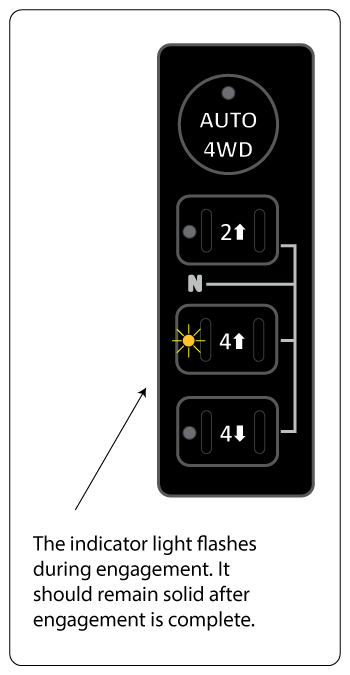Electronic 4WD

Four-wheel drive vehicles are shifted electronically or manually. Electronic 4WD vehicles have warning lights to inform the driver if there is a problem with the system. Different manufacturers use different transfer cases and control systems on their part-time 4WD vehicles. Typically, the indicator light flashes while the vehicle is shifting. Once the vehicle is in the desired mode, the light should remain solid, indicating that the shift into that mode is complete.
A flashing indicator light is typically caused by wiring or an electrical component like the controller, a faulty motor or fork, a speed sensor, or a position switch. Many 4WD units have an actuator on the front axle to lock and engage the front axle for 4WD. A faulty actuator or shift fork will cause the vehicle to remain in 2WD, and the light will flash, indicating a problem to the driver.
Check to see if the vehicle is in 4WD. Typically, the front tire should spin freely if the vehicle does not have a locking differential and does not complete its shift into 4WD. Jack up one side of the front of the vehicle and spin the tire. If the tire spins freely, the vehicle is in 2WD. If the tire is hard to turn or is locked, it is in 4WD. Be careful, though. A 4WD vehicle that does not contain a center differential can wind up if driven on dry pavement. This windup will cause the front tire to spin with great force while lifting the front tire off the ground. This condition is known as drivetrain windup.